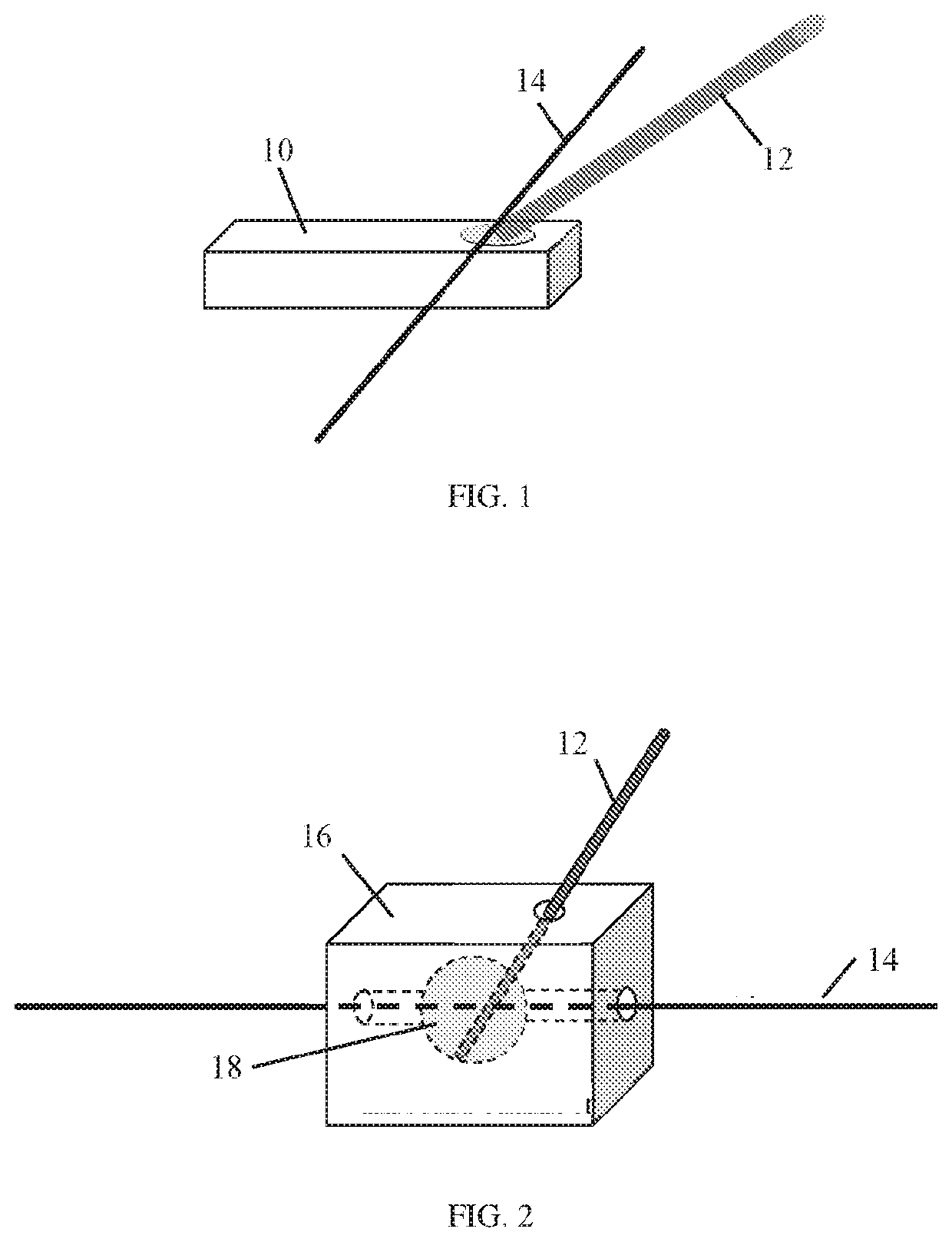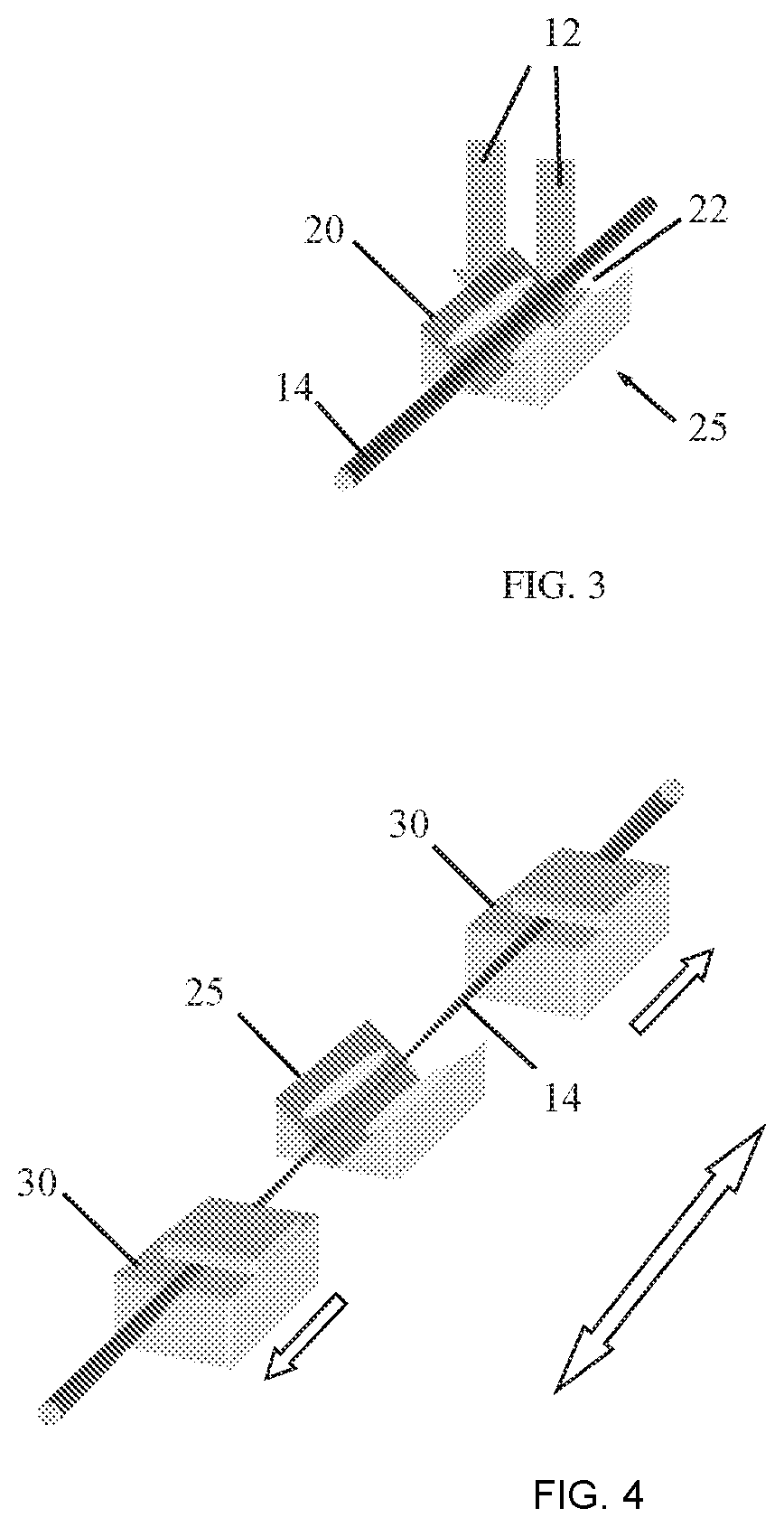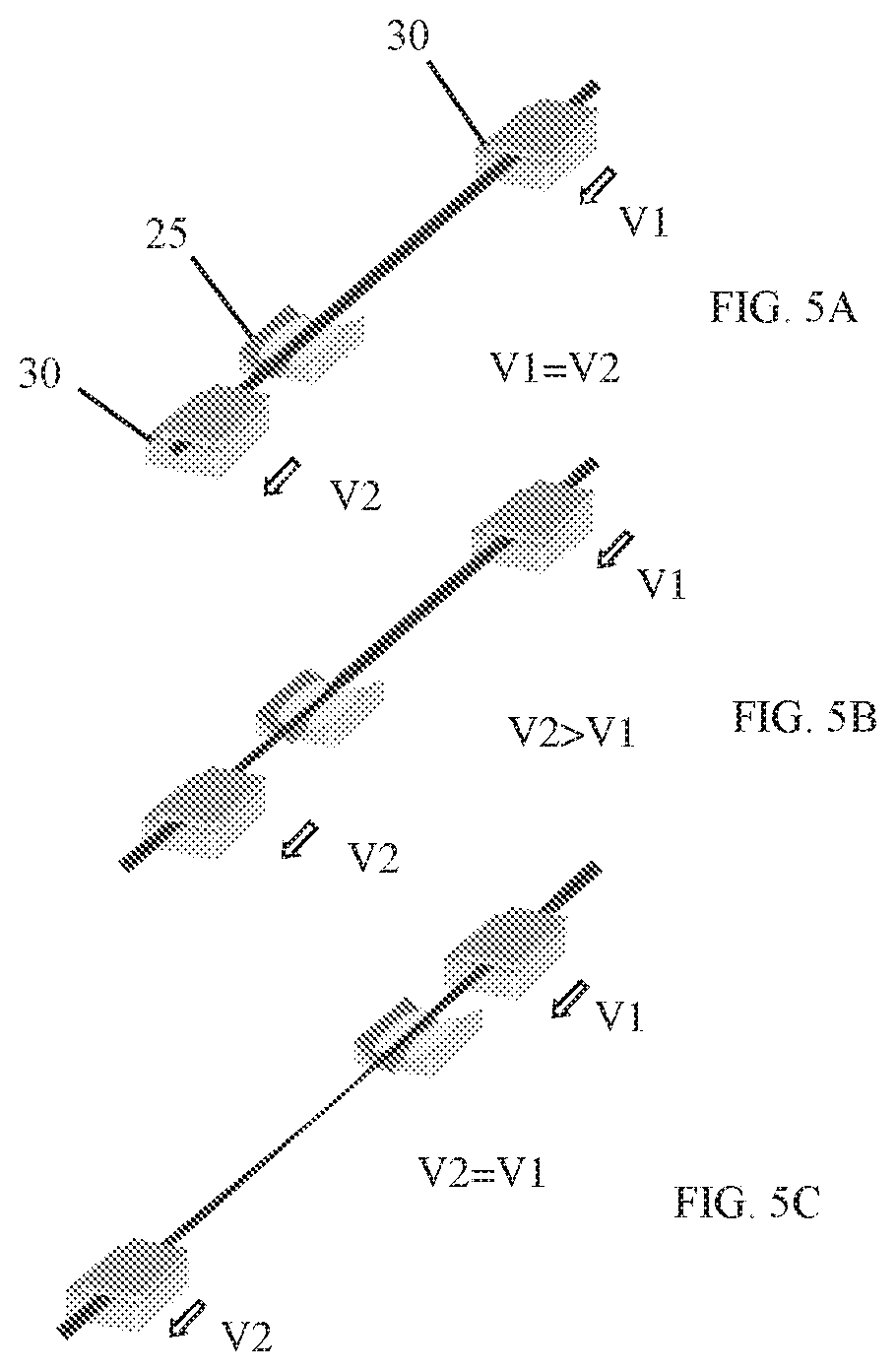Radiation pumped heater/heating element
- Summary
- Abstract
- Description
- Claims
- Application Information
AI Technical Summary
Benefits of technology
Problems solved by technology
Method used
Image
Examples
Embodiment Construction
[0028]Reference is now made to FIG. 1, which illustrates a radiation pumped heater, in accordance with a non-limiting embodiment of the invention, used for optical fiber processing. A ceramic substrate 10, such as a zirconia ceramic, is illuminated by a laser beam 12, such as a CO2 laser beam. The laser beam 12 is strongly absorbed near the zirconia upper face which in turn rapidly heats until reaching a steady state. When appropriate conditions are established, a few watt CO2 laser having a beam diameter of the order of one mm, can easily raise the laser-zirconia interaction zone to temperatures acceding 2000° C. in an atmospheric environment. An optical fiber 14 is heated by conduction and radiation emitted from the ceramic substrate 10. The ceramic substrate can maintain this high temperature for an hour or more.
[0029]It is noted that the ceramic substrate 10 may be quite porous, and the volume of the pores may constitute 90% or more of the total volume. Such porosity lowers the ...
PUM
| Property | Measurement | Unit |
|---|---|---|
| Temperature | aaaaa | aaaaa |
| Diameter | aaaaa | aaaaa |
Abstract
Description
Claims
Application Information
 Login to view more
Login to view more - R&D Engineer
- R&D Manager
- IP Professional
- Industry Leading Data Capabilities
- Powerful AI technology
- Patent DNA Extraction
Browse by: Latest US Patents, China's latest patents, Technical Efficacy Thesaurus, Application Domain, Technology Topic.
© 2024 PatSnap. All rights reserved.Legal|Privacy policy|Modern Slavery Act Transparency Statement|Sitemap



